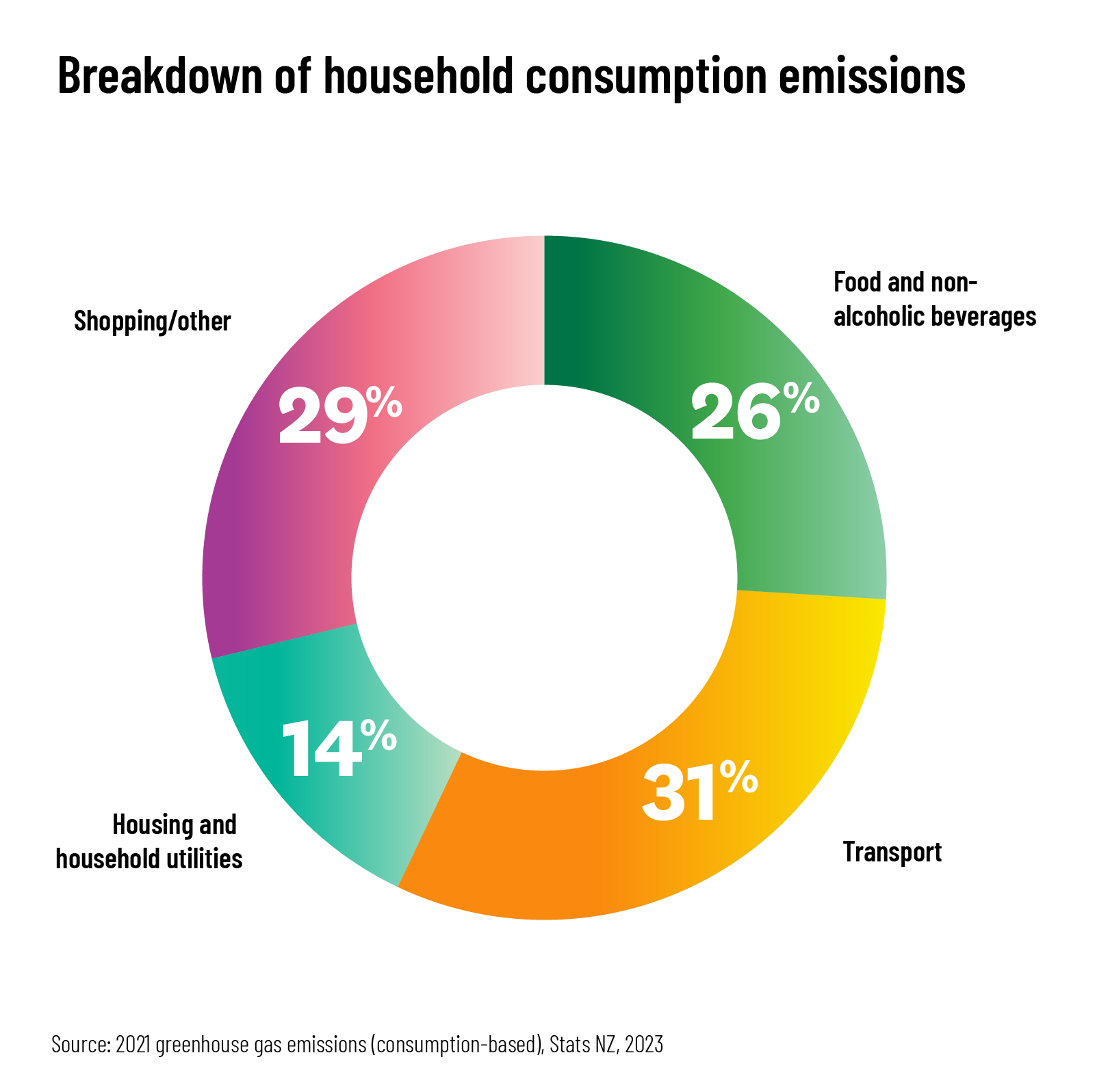Your carbon footprint is made up of the greenhouse gas emissions from everyday activities like how you get around, what you eat, and how much energy you use. The fewer emissions, the smaller your footprint.
Once you know where your emissions are coming from, you can find opportunities to cut down.
Discover your impact on the planet
Calculate your carbon footprint and stay motivated to take action. FutureFit is a simple online tool gives you an idea of your emissions, and what you can do to reduce them.
The average New Zealand carbon footprint
Your carbon footprint can be simplified into four major categories:
- Food
- Transport
- Housing and household energy use
- Shopping
If we average out New Zealand’s overall household consumption emissions, then per household, over a third of emissions are from transport, about a quarter are from food, a quarter are from shopping and recreation (such as household contents, clothing and other goods and services), and around one eighth are attributed to housing and household energy use.
Overall household consumption emissions in 2021 were 38.41 million tonnes of CO2-e (carbon dioxide equivalent emissions).1 Per capita this is about 7.5 tonnes of CO2-e.
It’s important to remember that the proportions above are based on averages. When you calculate your own carbon footprint you get a personalised view of your emissions – if you take a lot of international flights, for example, your carbon footprint could look quite different.
How it fits in to overall emissions
A carbon footprint is based on ‘consumption’ emissions, or the emissions caused by New Zealanders’ way of life – including the choices we make every day.
This is different to the 'gross' emissions (also called ‘production emissions’) which are what we measure to track progress against our emissions targets. These are the emissions released into the atmosphere from New Zealand territory, and can be viewed as the carbon footprint of our economy.
In 2022 our gross emissions were 78.4 million tonnes CO2-e.2 That’s about 15t per person – nearly double the number we get when we look at household consumption emissions alone. Most of the difference is accounted for by export goods that are consumed offshore (predominantly meat and dairy).
While as individuals we’re not responsible for these export emissions, we do benefit from the higher standard of living that comes with them, as exports impact our GDP.
Measure your business emissions
Learn how to measure your emissions and understand the carbon footprint of your business. Find free online emissions calculators for New Zealand businesses.
Continue reading
-
Live a lower carbon lifestyle
Clean energy is better for our climate, your wellbeing, and your pocket. Learn how to reduce carbon emissions in your everyday life.
-
New Zealand's emissions
Climate change is an issue for New Zealand, and for New Zealanders. Here's a look at what that means for us, and how we're tracking as a country.
-
The electricity grid
Why the time of day we use electricity makes a difference.

